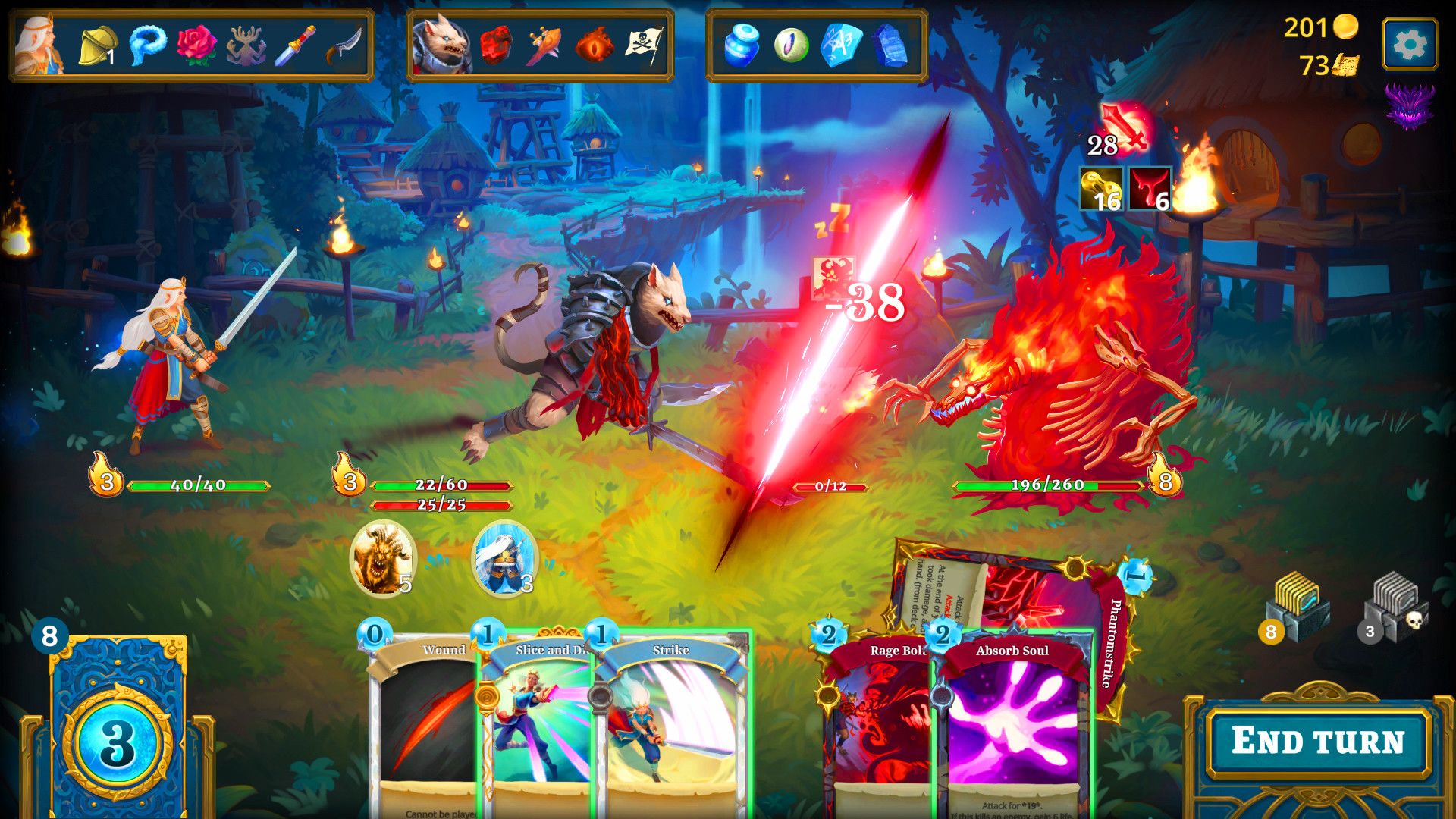

This adds yet another layer of strategy to each battle, as you need to juggle who should be the first seat and who the second. Essentially, Rougebook has a number one and number two seat in any battle. The unique twist with how enemy encounters go is how you choose to use your two heroes.

One such relic allows your character to block five incoming enemy attacks, which is especially helpful when you’re dealing with multiple enemies at once. Remember the relics I mentioned before? Those are especially handy in battles, as various relics grant you different abilities. Choosing poorly can result in a quick and decisive defeat in Rougebook, and that’s no fun. Choosing the right heroes at the right time will help you be successful when dealing with the multiple powerful foes in each battle. This becomes quite a strategic experiment, as you want to choose the heroes who would be best for that particular battle.

However, quite often it’s an enemy encounter that puts your deck up for a challenge.Įach enemy encounter involves choosing two heroes to take into battle. Hopefully it reveals new cards that help you throughout your adventure. Since you can’t see what’s on the blank space, it makes painting each part of the overworld map a unique surprise. These can range from new cards to add to your deck, relics, new locations, enemies, to even mythical creatures. The only way to fill in the overworld is to paint it, thus revealing various objects. Once you’re dropped into Roguebook’s world, the overworld map is completely blank. With Roguebook, there’s a unique presentation and dual hero battle system to keep deck building genre fans, and newcomers, interested for the long-haul. Yet I find myself constantly pulled in with a deck building game that offers something unique and special. There’s usually the same hook that causes me great frustration: random luck. I have to be honest and admit that deck building games usually aren’t my thing.


 0 kommentar(er)
0 kommentar(er)
